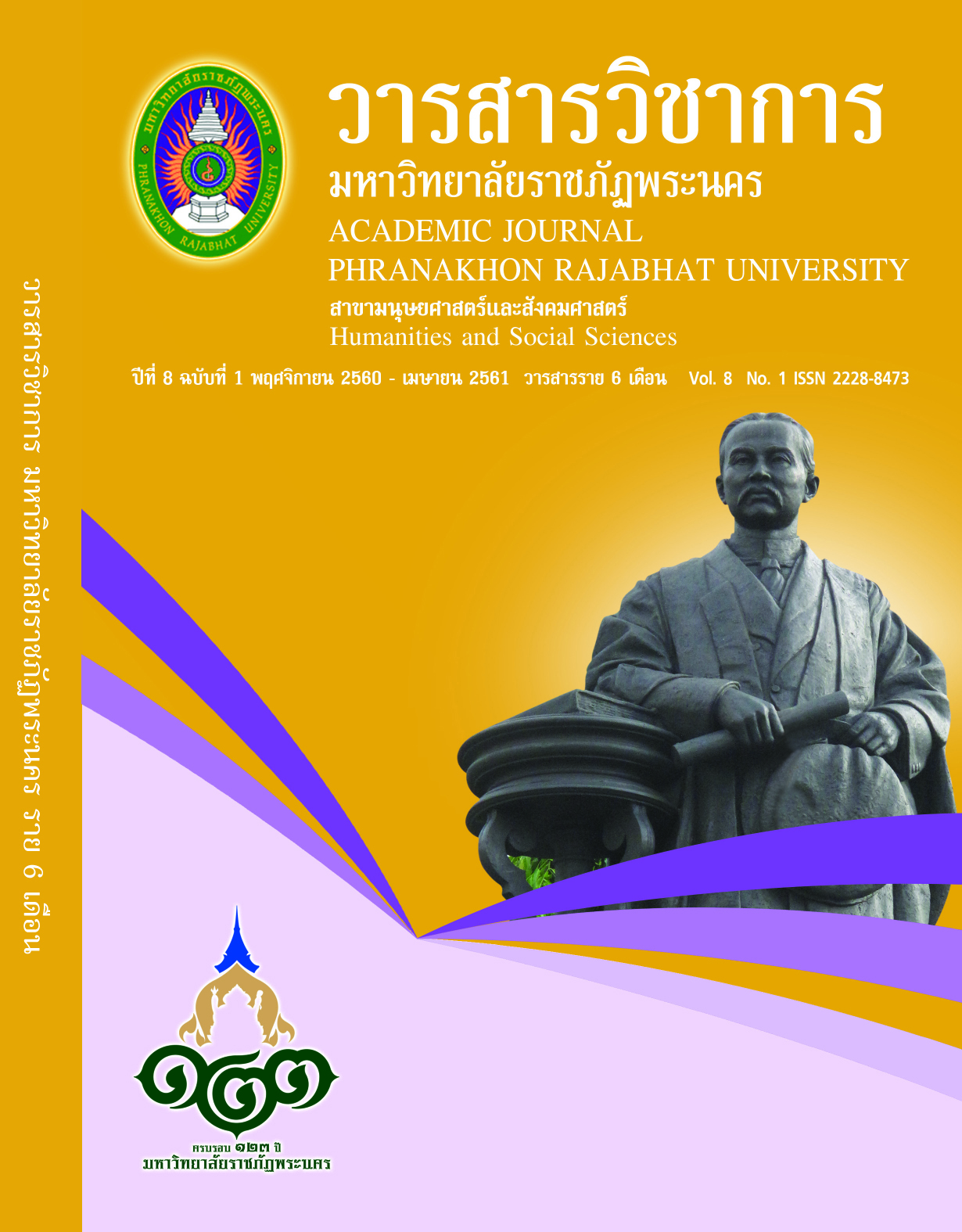พิธีกรรมด้านไสยศาสตร์ที่ปรากฏในการแสดงโขน
Keywords:
Appearance, Superstition Rituals, Khon PerformanceAbstract
The research results were firstly; the superstitious beliefs in the royal literature Ramayana is a belief of the worship of god according to the Brahmin principle and a significance of Buddhism principle which are believed in white and black magic. Secondly, the ceremony is the only once made and appeared in the Khon performance episode of Ravana makes acid sand burning the angel’s image and Kabillapat spear plated. Thirdly, the white and black magic belief is considered as doing a good thing and doing a bad thing and represents a cause and motivation as well as essential elements which are used in the worship ceremony such as the house ceremony, red flower, soil from 7 places and color of worship ceremony and bonfire. In addition, the ritual making can be divided into 3 procedures: the introduction to the worship ceremony; being worked on the worship ceremony and the leaving from the worship ceremony. Furthermore, the choreography for Na Phat songs represents a superstition belief in order to meet the holiness of the worship ceremony. The Na Phat Brahman song is used for representing the condition of the priest entering to the worship ceremony. The Tra Sun Ni Bat song is also used in the ceremony representing the holiness song. Dancers must concentrate and pay respect on movement expression. It is a dance pattern that has been inherited until it becomes a convention of Khon performance. When bring it up for the show and setting scenery according to the story, it is considered as a convention of Khon performance. Finally, the leaving worship ceremony has 3 categories: 1. Success ceremony 2. Failed ceremony due to breaking the rule (using the Na Phat Brahman to leave the ceremony) and 3.Destroying ceremony (using the Cherd song). However, the use of Na Phat song in the Khon performance depends on the script writer who has the well-knowledge in Khon performance.
References
ชมนาด กิจขัน. (2553). “การรำหน้าพาทย์ชั้นสูงเพลงตระ(ตัวพระ).” รายงานการวิจัย. มหาวิทยาลัยราชภัฎสวนสุนันทา.
ประเมษฐ์ บุณยะชัย.(2540). “การรำของผู้ประกอบพิธีในพิธีไหว้ครูโขน – ละคร”. วิทยานิพนธ์ปริญญาศิลปศาสตรหาบัณฑิต, จุฬาลงกรณ์มหาวิทยาลัย.
พุทธยอดฟ้าจุฬาโลก,พระบาทสมเด็จพระ. (2554). บทละครเรื่องรามเกียรติ์. ชุดรามเกียรติ์พิมพ์ครั้งที่ 2. กรุงเทพ: เพชรกะรัต.
พุทธเลิศหล้านภาลัย, มงกุฎเกล้าเจ้าอยู่หัว,พระบาทสมเด็จพระ. (2553). รามเกียรติ์พระราชนิพนธ์ ในพระบาทสมเด็จพระพุทธเลิศหล้านภาลัยและบ่อเกิดรามเกียรติ์พระราชนิพนธ์ในพระบาทสมเด็จพระมงกุฎเกล้าเจ้าอยู่หัวหนังสือชุดวรรณคดีอมตะของ ไทย. กรุงเทพฯ: ไผ่มีเดียเซ็นเตอร์.
สุดารัตน์ ตัณฑะอาริยะ.( 2548). “การวิเคราะห์ตำรายาแผนโบราณจากสมุดไทยของจังหวัดพังงา.” .วิทยานิพนธ์ปริญญาอักษรศาสตรมหาบัณฑิต มหาวิทยาลัยศิลปากร.
สุวัฒน์ จันทร์จำนง. (2540). ความเชื่อของมนุษย์มนุษย์เกี่ยวกับปรัชญาและศาสนา. กรุงเทพฯ : สุขภาพใจ.
สำนวน งามสุข. (2536). สังคมและวัฒนธรรม ค่านิยม ครอบครัว ศาสนา ประเพณี. กรุงเทพฯ : ไทย วัฒนาพานิช
Downloads
Published
How to Cite
Issue
Section
License
"บทความวิชาการในวารสารฉบับนี้ ถือเป็นความรับผิดชอบของผู้เขียนเท่านั้น"
สงวนลิขสิทธิ์ตามพระราชบัญญัติลิขสิทธิ์




